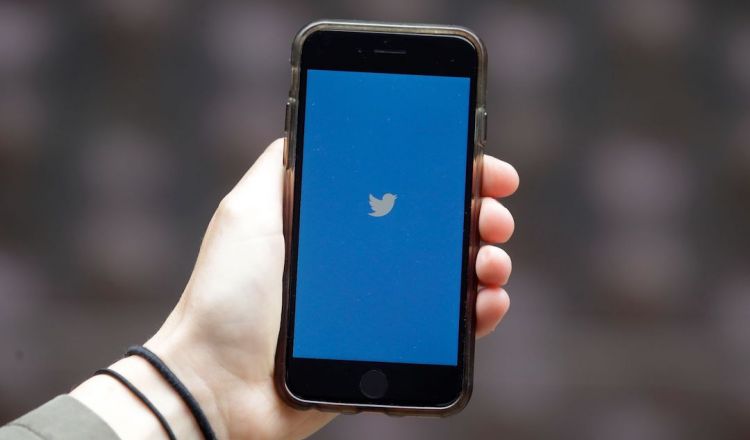News organizations have a social media problem
2022-06-16 10:55

(AP Photo/Jeff Chiu)
by Tom Jones-poynter
|
Last week, The Washington Post had a messy controversy. One of its better-known reporters retweeted a sexist and homophobic tweet and it was noted by another Post reporter. Then, for several days, the drama over it all — which I wrote about at length — played out on Twitter. The reporter who retweeted the offensive tweet was suspended; the reporter who called him out was ultimately fired; and the executive editor of the paper, Sally Buzbee, sent out two memos that essentially told staffers to be mindful of how they treat each other on social media. Like I said, a real mess. But this didn’t really start with that retweet and the Post isn’t the only news outlet dealing with social media issues, mostly because of wonky social media policies. So earlier this week, my colleague Kelly McBride, Poynter’s senior vice president and chair of the Craig Newmark Center for Ethics and Leadership, wrote about how newsrooms need to update their social media policies. McBride wrote, “Updating policies, especially social media policies, can be tedious, tense, time-consuming and tricky. It requires dedicating a manager (or a team of them), with the clout and journalism leadership skills to facilitate difficult conversations among those with diverse beliefs and perspectives. ‘Social media’ is not a monolithic thing and the endeavor to come up with a fresh ‘policy’ will undoubtedly include making some calls that will not be popular with everyone. It requires committing time and including many voices.” McBride knows this because she has trained and consulted dozens of newsrooms on this very issue. She wrote that newsrooms can start with these four steps:
McBride gives her expanded thoughts on the above bullet points, so take a moment to read her column. But the part that interested me most was the why. And I would add another question: How. Why do news outlets want (or not want) their staff to use social media? And how should they use it? McBride writes, “Are you there to establish and expand your brand? Is it critical to acquire an audience? Or perhaps it’s another way to connect with subscribers. Is it a useful path for engagement and interaction with your readers/viewers/listeners? Do you seek to be at the center of conversation among the communities that you serve? Think of all the reasons and prioritize their value.” This is me talking now: News outlets often ask their journalists to promote their work and to engage with their audience on Twitter and other social media platforms. Some even use social media to promote their own “brand.” (That’s a whole other topic, but I generally get it, because it helps the news outlet, too.) However, when you’re interacting with people on Twitter, for instance, and writing about controversial issues, someone is eventually going to tweet something that someone might find offensive or confrontational. This is in no way to suggest that retweeting a sexist and homophobic tweet is acceptable. Or that an offensive tweet is merely chalked up to the price of having a social media presence. But news outlets shouldn’t be shocked when these things happen. Yet they often seem clueless on how to handle things when they go over the guardrails. You can also begin to understand why some outlets who used to want their journalists to have a big social media presence are now fine if their journalists stay off Twitter altogether, or at least cut way back. But social media will continue to have a major role for news outlets and they must have clearer policies in place. And once a policy is laid out, the key, according to McBride, is following through. “In my experience working with newsrooms,” McBride writes, “many policies get stuck here because the news executive is not accountable to his direct reports, or because of dysfunction at the administrative level. Often the senior news executive now must get the buy-in of a publisher or board of directors. Also, the new language must be reviewed by the HR department and the legal team. Either stage can be a black hole unless there is an influential advocate to move things along.” She continues, “Once the policy is formally adopted, it needs to be introduced to the entire staff (usually by memo) and reviewed and discussed either in targeted workshops or department meetings. People don’t embrace new standards without a chance to discuss them. Finally, managers need to be familiar enough with the standards that they can effectively onboard new employees.” Speaking of social media …Washington Post media reporter Jeremy Barr has a story out about new New York Times executive editor Joe Kahn. And the topic of social media came up. Barr writes that Kahn “shares (previous executive editor Dean) Baquet’s strong belief that Times journalists need to de-prioritize Twitter. Part of that is an exhortation to spend less time sending tweets; but a bigger concern is that too many journalist have come to see the Twitter audience as a proxy for the public. Increasingly, he fretted, some Times journalists ‘don’t even want to engage in certain kinds of stories because they anticipate the reaction that they’ll get from writing on, reporting on, a story that tends to be a lightning-rod type issue on Twitter.’” Oh, and since I mentioned Baquet, the Times’ Josh Crutchmer tweeted Baquet’s goodbye as executive editor of the Times. The cost of fact-checkingAnother one of my colleagues, Angie Drobnic Holan — editor-in-chief of PolitiFact — has a new piece out: “PolitiFact reporters face online harassment; we keep fact-checking anyway.” Criticism is nothing new for PolitiFact and most fact-checkers and journalists. They write about hot-button issues and, often, readers simply don’t like the facts in this ever-increasing polarization of our politics and country. Holan said critiques and even disagreements are not unreasonable. So why is she writing about this now? She writes, “… lately, reasonable disagreement and even hard-charging criticism has evolved into something darker: personal criticism of PolitiFact journalists that can only be described as online harassment and intimidation.” Holan then shares several examples that absolutely are personal and harassing. Holan writes, “Yes, journalists have frequently been attacked in the course of American history. Here at PolitiFact, we’ve received hate mail ever since we started in 2007. What has been different in recent months — and the reason we’re writing this — is that the latest attacks have been intensely personalized and aimed at specific journalists, with the apparent intention of intimidating and isolating individual members of our team.” Holan goes on to write that one of the chief online attackers of late has been radio host Dan Bongino. Holan writes, “Like many other online attackers, Bongino has misrepresented our findings, the scope of our reporting, and the points our fact-checks have made. He’s also falsely described corrections we’ve made after publication as proof of the illegitimacy of our work. The truth is that every reputable news organization makes corrections in order to ensure that their reports are as complete and accurate as possible. PolitiFact has a published corrections policy and will continue to make corrections as part of our normal work process.” Holan continues, “More concerningly, Bongino has egged on and been egged on by a more traditional figure: the press secretary for the governor of Florida.” That would be Christina Pushaw. Holan writes, “When the government itself tries to delegitimize journalists, it’s a warning sign that they may soon take more concrete steps against independent journalism. Yes, that would be unconstitutional, but we’ve seen many constitutional norms suffer in recent days. The actions of these anti-journalism forces are deeply concerning to everyone who cares about the independent practice of fact-finding. Disparagement of individual journalists has become an occupational hazard for PolitiFact’s staff and among journalists at media organizations around the country.” Sadly, when Holan posted links to her column on social media, it was met with … more online harassment. I asked Holan on Tuesday about the column and she told me, “Honestly, I felt like if I didn't write something, I wouldn't be able to look myself in the eye considering what the reporters have had to put up with lately.” Running Up That ChartKate Bush’s song “Running Up That Hill” is moving up the charts in the United Kingdom and the United States even though the song was released in 1985. The reason for the new popularity is because the song was featured on a recent episode of Netflix’s hit show “Stranger Things.” The New York Times’ Ben Sisario wrote, “It has now reached No. 2 in Britain — held off only by Harry Styles’s “As It Was” — and this week climbed four spots to reach No. 4 on the Billboard Hot 100, the standard U.S. pop singles chart, Bush’s highest position ever. It was Spotify’s most streamed track throughout the world last week, with 57.2 million clicks (about a million more than ‘As It Was’), and is showing no signs of slowing down.” Apparently, however, some older folks are annoyed that younger folks are just now catching on to Kate Bush. And isn’t that completely dumb? I’m older. I’ve long been a fan of Bush — her “Hounds of Love” album, which opens with “Running Up That Hill,” is among my favorite 20 or so albums of all time — and I think it’s great that younger generations are finding out how awesome Bush is. If you’re a fan of someone’s music, why wouldn’t you want more people to be exposed to how good it is? Meanwhile, Bush, who rarely gives interviews, put out a statement on her website. She’s thrilled at the recent reaction and writes, “How utterly brilliant! … So many young people who love the show, discovering the song for the first time.” She added, “The response to Running Up That Hill is something that has had its own energy and volition. A direct relationship between the shows and their audience and one that has stood completely outside of the music business. We’ve all been astounded to watch the track explode!” Media tidbits |
 |
| (Courtesy: The New York Times) |
|









